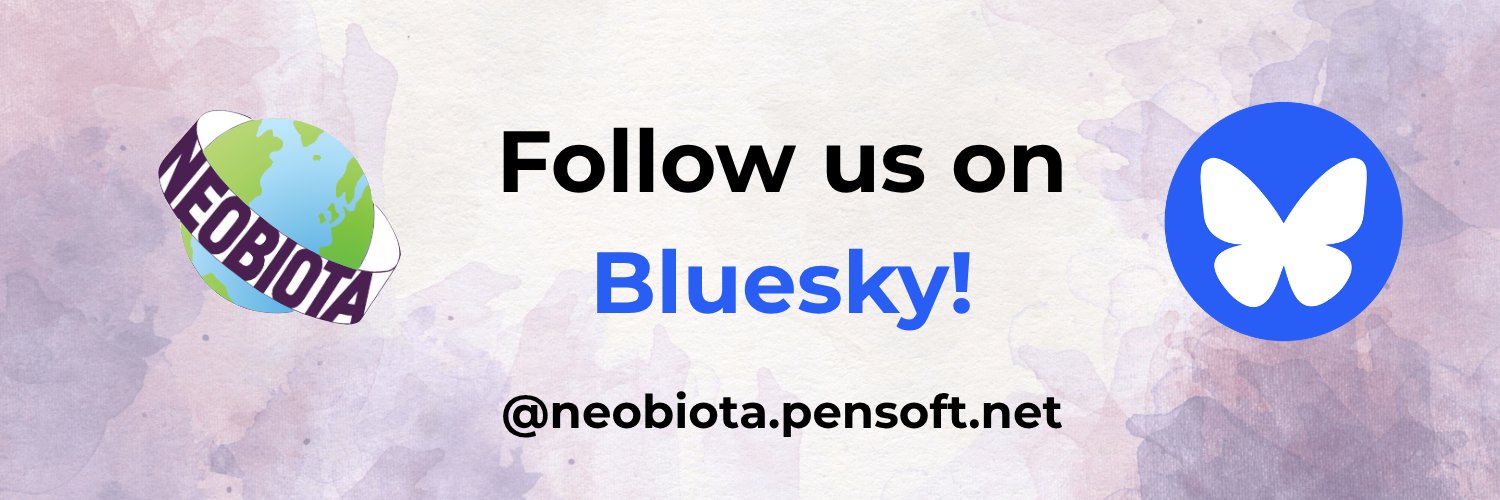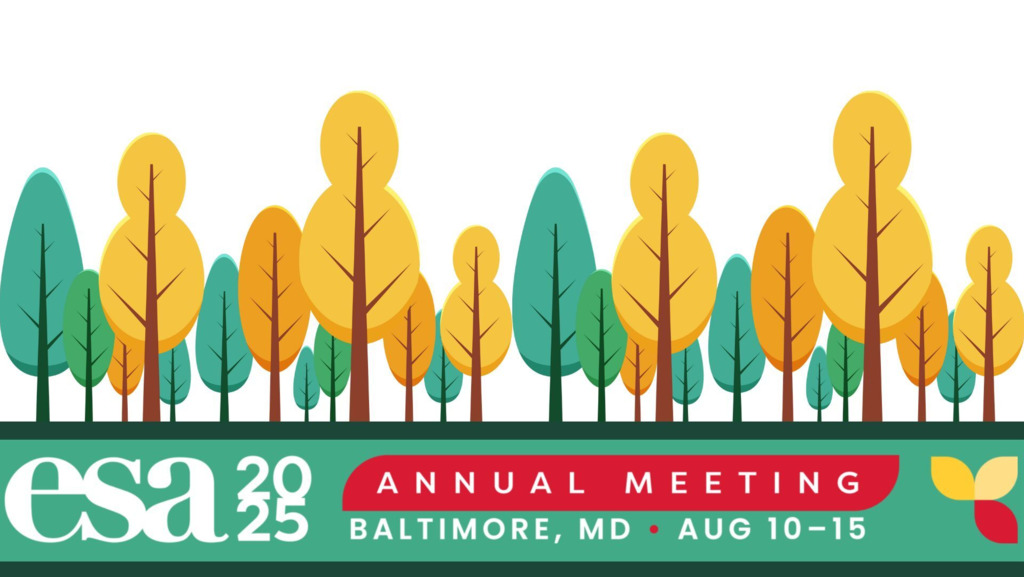
NeoBiota
@NeobiotaJournal
#OA journal for research on biological invasions. Now on Bluesky: https://bsky.app/profile/neobiota.pensoft.net
We are moving to Bluesky! Keep up to date with the latest research on biological invasions over there and on Facebook. 🔵 bsky.app/profile/neobio… facebook.com/NeoBiota/

We'll be in Baltimore next month for the @ESA_org annual meeting - come say hi to us at the @Pensoft stall! neobiota.pensoft.net/news/940

Argument maps can support decisions to declare the presence of alien species: South Africa as a case study. 🔗 doi.org/10.3897/arphap… @neobiotajournal
Plastic Pollution Meets Biological Invasions: A Systematic Review of Emerging Interactions. 🔗 doi.org/10.3897/arphap… @NeobiotaJournal
By observing Oenothera drummondii in coastal ecosystems, researchers demonstrate the ability of unmanned aerial vehicles to identify herbaceous invasive plant species. 🔗 doi.org/10.3897/neobio…

Optimizing invasive species distribution models: a test with the giant hogweed in Switzerland. 🔗 doi.org/10.3897/arphap… @NeobiotaJournal
The first publication of our research group @BiTE_UHasselt within the @CMK_Uhasselt on invasive land planarians! Nice Dutch-French-Belgian collaboration with financial support of the @Secretariat_IAS at @BelgianNatural.
In order to design effective policy to control the spread of non-native land flatworm species across Europe, researchers explore the distribution of select species across the continent, with a focus on the Netherlands. 🔗 doi.org/10.3897/neobio…
In order to design effective policy to control the spread of non-native land flatworm species across Europe, researchers explore the distribution of select species across the continent, with a focus on the Netherlands. 🔗 doi.org/10.3897/neobio…

The substantial delay between the naturalisation and publication of grasses in Hawai‘i is illustrative of a wider problem among many taxonomic groups around the world, which is hampering the study of the spread of invasions globally. 🔗 doi.org/10.3897/neobio… @uhmanoa
Researchers compare basal metabolic rates, body and nutritional condition and body size between native and invasive common waxbills in South Africa. 🔗 doi.org/10.3897/neobio…

Functional trait interactions drive seed buoyancy and dispersal strategies in Echinocystis lobata. 🔗 doi.org/10.3897/arphap… @NeobiotaJournal
Lessons and challenges in creating alien species lists: insights from South Africa's national reports on the status and management of biological invasions. 🔗 doi.org/10.3897/arphap… @NeobiotaJournal
Mathieu Denoël of the University of Liège presents insights from paedomorphic newts in introduced populations. 🔗 doi.org/10.3897/neobio… #invasivespecies

Researchers present the first description of shell disease in the non-indigenous Atlantic rock crab (Cancer irroratus) in Icelandic waters, including a significantly concerning upward trend. 🔗 doi.org/10.3897/neobio…

NeoBiota has received a new Journal Impact Factor and remains in Q1 for Biodiversity Conservation. neobiota.pensoft.net/news/913

A new article from the Guardian explores the spread of invasive raccoons in Europe, featuring research from our journal on their diet of endangered mussels in western Poland. theguardian.com/environment/20…
The invasive North American Impatiens capensis could colonise European habitats of native Impatiens noli-tangere, raising concerns over the native species' long-term persistence due to its narrower ecological tolerance and weaker performance. 🔗 doi.org/10.3897/neobio…

From detection to action—a proposed workflow to ensure first reports of alien species from molecular analyses are acted upon. 🔗 doi.org/10.3897/arphap… @NeobiotaJournal